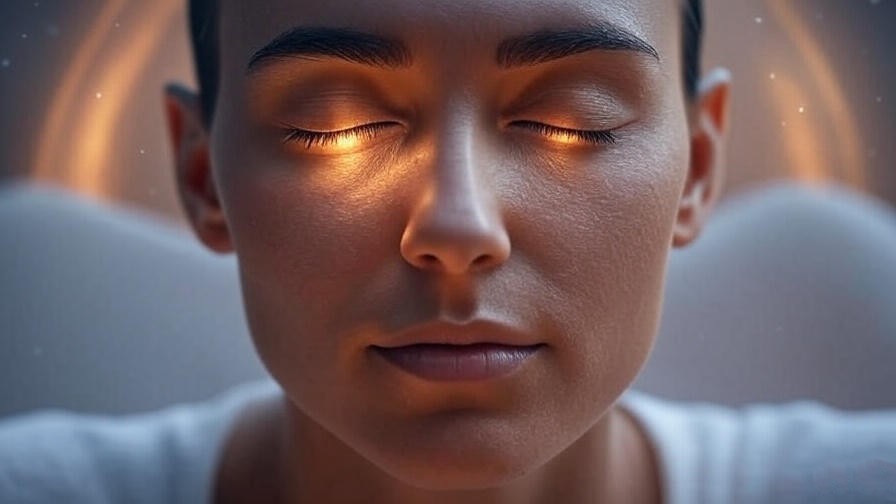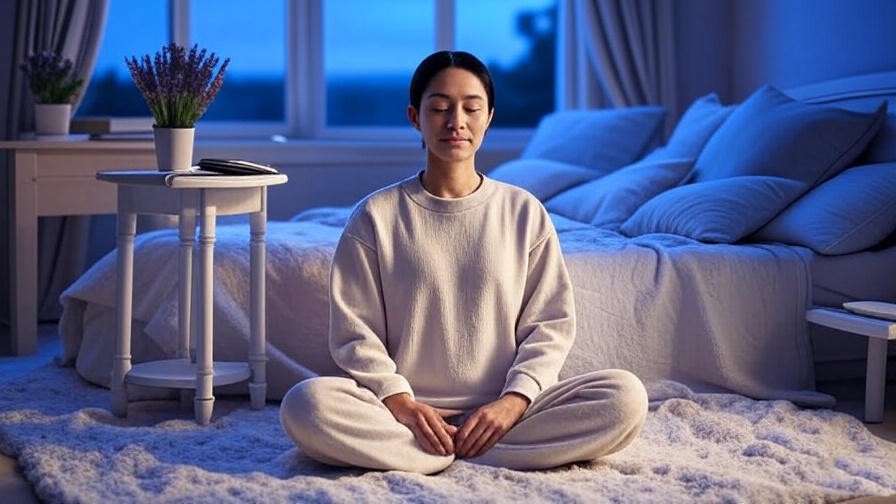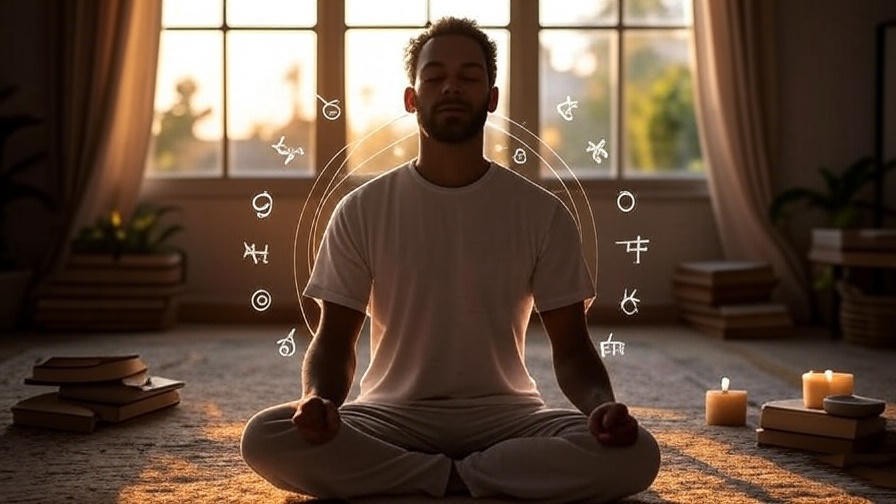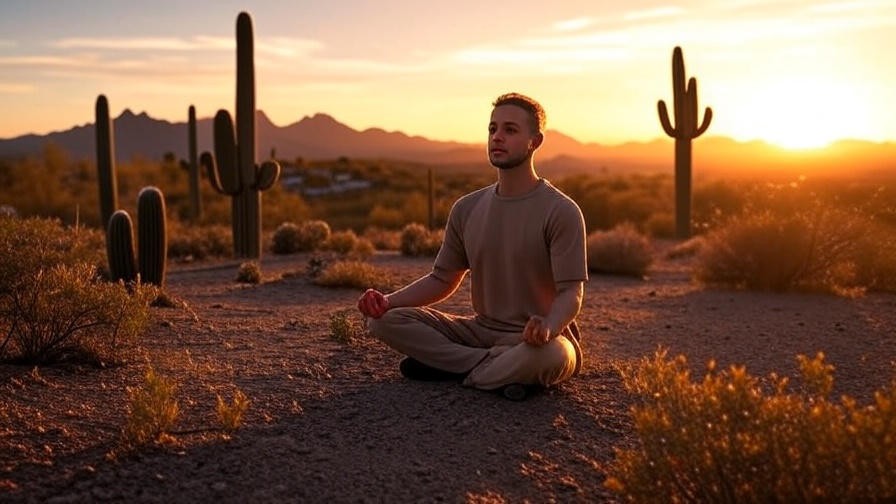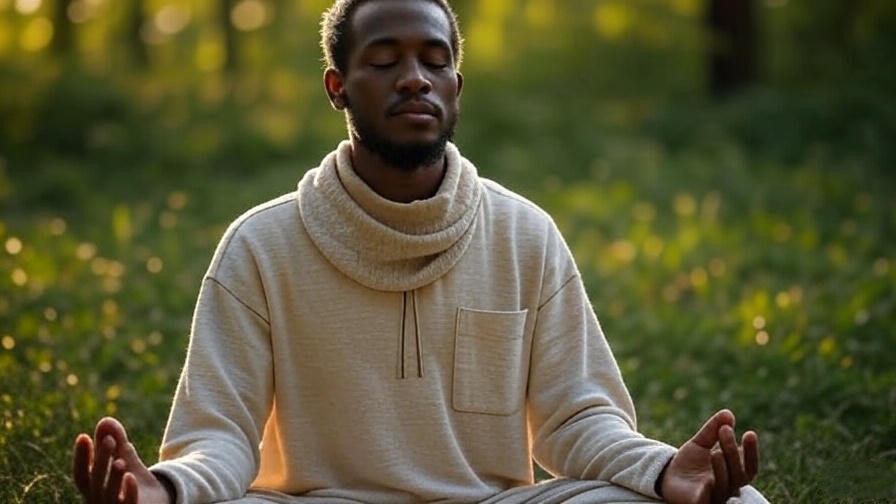Picture this: you’re deep in meditation, enveloped in calm, when suddenly, two vivid eyes appear in your mind’s eye, gazing directly into your soul. The vision is so striking it pulls you out of your trance, leaving you curious, perhaps even unsettled. What does seeing two eyes during meditation mean? Is it a spiritual message, a psychological signal, or something else entirely? This phenomenon, experienced by countless meditators, holds profound potential for self-discovery and emotional healing. As a holistic well-being expert with over a decade of experience in meditation, dreamwork, and mindfulness, I’ve guided many through this enigmatic experience. In this comprehensive guide, you’ll uncover the spiritual, psychological, and scientific meanings behind seeing two eyes during meditation, alongside practical steps to interpret and integrate this vision into your practice. Whether you’re a beginner or a seasoned practitioner, this article offers actionable insights to deepen your spiritual journey, enhance emotional clarity, and foster inner peace.
What Does Seeing Two Eyes During Meditation Mean?
The Spiritual Significance of Eyes in Meditation
Eyes have long been revered as gateways to the soul across spiritual traditions. In Hinduism, the “third eye” symbolizes intuition and spiritual awakening, while in Buddhist practices, the gaze of deities like Tara represents compassion and wisdom. Seeing two eyes during meditation often feels like an encounter with something greater—perhaps your higher self, a spiritual guide, or a manifestation of universal consciousness. Ancient texts, like the Upanishads, describe eyes as mirrors of inner truth, reflecting the essence of the divine within us.
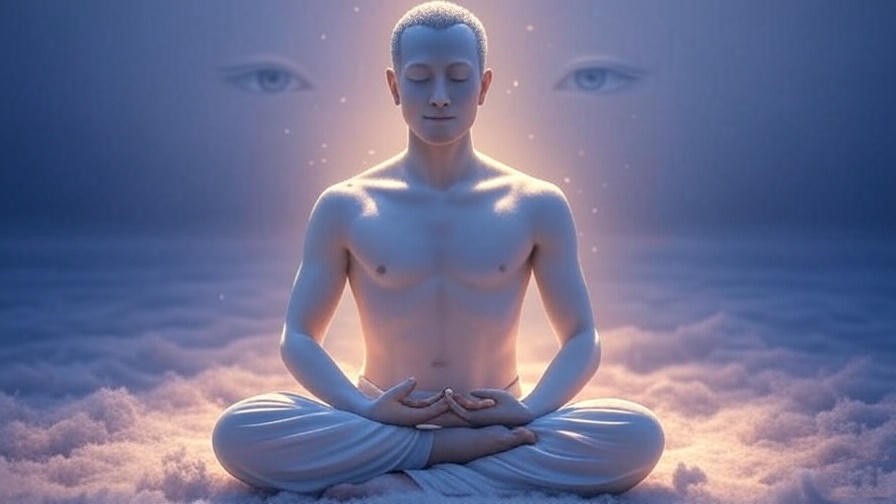
Modern spiritual teachers echo this wisdom. “The eyes you see in meditation are often a mirror of your inner truth,” says Dr. Ananda Sharma, a mindfulness expert with 20 years of teaching experience. This vision may invite you to explore hidden aspects of yourself, such as unresolved emotions or untapped intuition, aligning with holistic practices like Katara Atanatos, which emphasize emotional resonance through heart-centered meditation.
Psychological and Emotional Interpretations
Beyond spirituality, seeing two eyes during meditation can carry deep psychological meaning. Neuroscience suggests that vivid imagery during meditation arises from the brain’s visual cortex and amygdala, which process emotions and memories. A 2021 study in Neuroscience Letters found that hypnagogic imagery—spontaneous visuals during relaxed states—often reflects emotional states. For example, seeing intense eyes might signal suppressed fear, while warm eyes could indicate a longing for connection.
Jungian psychology offers further insight, viewing such visions as archetypes from the collective unconscious. The eyes might represent the “inner observer,” a part of you witnessing your thoughts and emotions. For instance, a client I worked with saw piercing eyes during meditation and, through guided reflection, uncovered suppressed grief from a past loss. By processing this vision, she achieved emotional release, highlighting the therapeutic potential of such experiences.
Cultural and Historical Context
Across cultures, eyes in meditative or dream states carry profound significance. Indigenous shamans often interpret eyes as messages from spirit guides or ancestors, guiding the individual toward healing or purpose. In Tibetan Buddhism, visualizing the eyes of a deity during meditation fosters a connection to divine qualities like compassion. These traditions align with Katara Atanatos, a practice I’ve explored extensively, which uses heart-centered meditation to process the emotional resonance of dream or meditative imagery. By connecting with the feelings evoked by the eyes, you can tap into their wisdom, bridging ancient practices with modern holistic well-being.
Tip: Start a meditation journal to record visions like eyes, noting their appearance and emotions they evoke. This practice, rooted in Katara Atanatos, helps uncover patterns tied to your spiritual or emotional state.
Why Do You See Two Eyes During Meditation?
The Science of Visual Phenomena in Meditation
The brain’s ability to produce vivid imagery during meditation is well-documented. During deep relaxation, the default mode network (DMN)—responsible for self-referential thoughts—becomes less active, allowing spontaneous visuals to emerge. A 2020 study in Nature Communications found that meditation enhances neural plasticity, enabling the brain to generate imagery like eyes through the interplay of the visual cortex and pineal gland. This is especially common in the hypnagogic state, the transitional phase between wakefulness and sleep, where the mind is highly receptive to symbolic visuals.
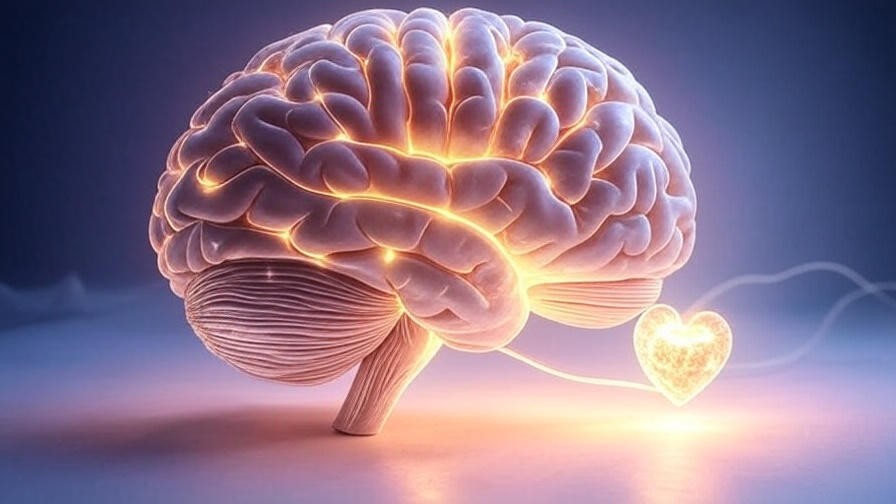
The vagus nerve, connecting the heart and brain, also plays a role. A 2019 study in Nature Communications showed that vagal activity during relaxed states influences emotional memory processing, which may manifest as vivid imagery like eyes. This heart-brain connection underscores why meditative visions often carry emotional weight, making them powerful tools for self-discovery.
Spiritual and Metaphysical Explanations
From a metaphysical perspective, seeing two eyes may signal a connection to universal consciousness or a spiritual awakening. In Advaita Vedanta, the “inner observer” represents pure awareness, and eyes in meditation may symbolize this self-realization. Similarly, Native American traditions view eyes as messages from spirit animals or ancestors, offering guidance or protection. These interpretations suggest that the vision is not random but a call to deepen your spiritual practice, aligning with your inner truth or a higher purpose.
Common Triggers for Seeing Eyes
Several factors increase the likelihood of seeing eyes during meditation:
- Deep Relaxation: Practices like Vipassana or guided visualization quiet the mind, creating space for imagery.
- Emotional Intensity: Strong emotions, such as grief or joy, can trigger vivid visions as the subconscious processes them.
- Meditation Techniques: Visual-focused methods, like gazing at a candle flame (Trataka), enhance visual phenomena.
- External Factors: Fasting, sleep deprivation, or intense mindfulness retreats can heighten meditative experiences.
Tip: Meditate in a dimly lit, quiet space with minimal distractions to enhance the clarity of visual phenomena. Use calming scents like sandalwood to deepen relaxation.
How to Interpret the Eyes You See
Tuning Into Emotional Resonance
Interpreting the eyes you see begins with their emotional impact, a principle central to Katara Atanatos. Rather than analyzing their literal appearance, focus on the feelings they evoke—fear, love, curiosity, or calm. Try this heart-centered meditation: sit quietly, place a hand on your heart, and breathe deeply. Reflect on the emotions tied to the eyes. For example, a meditator I guided saw stern eyes and felt fear. Through meditation, she realized they represented self-judgment, leading her to cultivate self-compassion.
Example: Imagine seeing kind, glowing eyes that evoke warmth. By meditating on this feeling, you might uncover a longing for self-love, guiding you toward affirmations like, “I am worthy of compassion.”
Analyzing the Symbolism
The appearance of the eyes offers clues to their meaning:
- Human vs. Animal: Human eyes might reflect personal relationships or self-awareness, while animal eyes (e.g., a wolf) could symbolize instinct or strength.
- Kind vs. Intense: Gentle eyes may indicate comfort or guidance, while piercing eyes might point to unresolved fears.
- Familiar vs. Unknown: Familiar eyes could connect to someone in your life, while unknown eyes may represent your higher self or a spiritual entity.
Journaling is key. Ask: “What do these eyes want to tell me?” or “What part of me do they reflect?” This reflective practice helps uncover the vision’s significance.
Seeking Guidance from Experts
For recurring or intense visions, consider consulting a meditation teacher or dreamwork facilitator. Organizations like the International Association for the Study of Dreams offer workshops and communities for support. Apps like Insight Timer provide guided meditations for processing spiritual visions, making expert guidance accessible.
Resource: Explore Insight Timer’s collection of guided meditations for dreamwork and spiritual imagery to deepen your practice.
Practical Steps to Deepen Your Meditation Practice After Seeing Eyes
Preparing Your Mind and Environment
A conducive environment enhances meditative visions. Create a serene space with dim lighting, calming scents (e.g., lavender or sandalwood), and minimal distractions. Set a pre-meditation intention, such as, “I am open to understanding the messages in my visions.” Consistent sleep (7–9 hours, per the National Sleep Foundation) supports vivid meditative experiences by optimizing REM cycles, where imagery often originates.
Step-by-Step Meditation Practice
Follow this structured approach to engage with the vision of eyes:
- Ground Yourself: Spend 5 minutes on deep breathing to relax your body and mind. Inhale for 4 counts, hold for 4, exhale for 6.
- Recall the Vision: Visualize the two eyes, noting their color, expression, and emotional impact.
- Heart-Centered Meditation: Place a hand on your heart and breathe deeply. Ask, “What is this vision teaching me?” Let emotions surface without judgment.
- Journal Insights: Write down emotions, memories, or insights that arise. Look for heart-shifting moments—shifts in perspective or emotional release.
- Affirm Your Growth: Use affirmations like, “I embrace the wisdom of my visions,” to integrate the experience into your spiritual practice.
Downloadable Resource: Download our free PDF, “5 Steps to Interpret Meditative Visions,” with journal prompts and affirmations to guide your practice. [Link to your website.]
Integrating Insights into Daily Life
Apply the vision’s insights to your waking life. If the eyes evoked fear, address underlying anxieties through journaling or therapy. If they inspired peace, pursue activities that align with that calm, such as yoga or creative expression. A 2022 Journal of Positive Psychology study found that yoga enhances emotional resilience, complementing meditative insights.
Example: A practitioner saw glowing eyes and felt a call to trust her intuition. By acting on this insight, she left a draining job, finding greater fulfillment in a new career path.
Common Challenges and How to Overcome Them
Difficulty Recalling or Sustaining Visions
Some struggle to recall meditative visions due to irregular sleep or stress. To improve recall, maintain a consistent sleep schedule and avoid caffeine or alcohol before meditation, as they disrupt relaxation. Guided visualizations, available on apps like Calm, can help sustain imagery.
Tip: Practice a 5-minute body scan meditation before bed to prime your mind for vivid visions.
Feeling Fear or Discomfort
Intense visions, like piercing eyes, can evoke fear, especially for beginners. This often reflects unresolved inner conflicts. Use grounding techniques: focus on your breath or visualize a protective white light surrounding you. Heart-centered meditation can transform discomfort into empowerment by addressing the emotion’s root.
Uncertainty About Interpretation
Vague or ambiguous visions can be challenging to interpret. Instead of overanalyzing, focus on the feelings they evoke, as emphasized in Katara Atanatos. If stuck, join a meditation community or use guided sessions on apps like Headspace to gain clarity.
Real-Life Benefits of Engaging with Meditative Visions
Emotional Healing and Stress Reduction
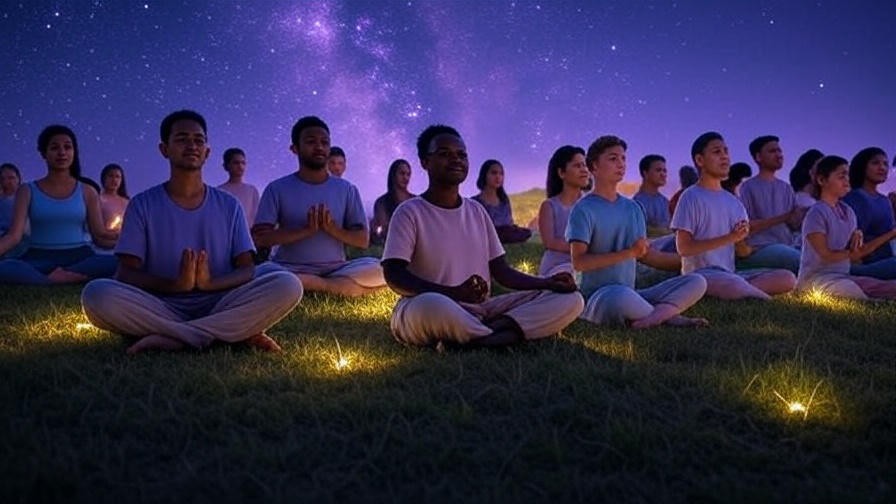
Processing visions like seeing eyes can release emotional blockages. A 2021 Frontiers in Psychology study found that mindfulness practices, including meditative imagery, reduce anxiety by fostering emotional regulation. For example, a meditator I worked with saw warm eyes and, through heart-centered meditation, embraced self-acceptance, alleviating chronic stress.
Spiritual Growth and Self-Awareness
Engaging with visions deepens your connection to yourself and the universe. In traditions like Buddhism, such experiences are seen as steps toward enlightenment. A practitioner who saw animal eyes during meditation interpreted them as a call to reconnect with nature, leading to a renewed sense of purpose.
Enhanced Meditation Practice
Working with visions strengthens meditation skills like focus and emotional awareness. A 2020 Journal of Clinical Sleep Medicine study showed that consistent mindfulness practices enhance emotional clarity within weeks, making your meditation practice more rewarding.
FAQs About Seeing Two Eyes During Meditation
Why Do I See Eyes When I Meditate?
The interplay of neurological (visual cortex activation) and spiritual (connection to higher consciousness) factors creates vivid imagery. The brain’s relaxed state during meditation allows the subconscious to surface as symbolic visuals like eyes.
Are These Visions a Sign of Spiritual Awakening?
Eyes may indicate heightened awareness or a shift in consciousness, as noted in traditions like Advaita Vedanta. They often signal a deepening of your spiritual practice, inviting self-reflection.
What If the Eyes Feel Threatening?
Reframe fear through grounding techniques, like deep breathing or visualizing protective light. Meditate on the emotion’s source to transform discomfort into healing, using heart-centered practices.
Do I Need to Be Experienced to Work with These Visions?
No experience is required. Beginners can start with 5-minute guided meditations on apps like Calm or YouTube channels by experts like Tara Brach to process visions effectively.
How Can I Make These Visions More Vivid?
Optimize sleep (7–9 hours), practice regular meditation, and use visualization techniques, like focusing on a candle flame, to enhance imagery clarity.
Conclusion
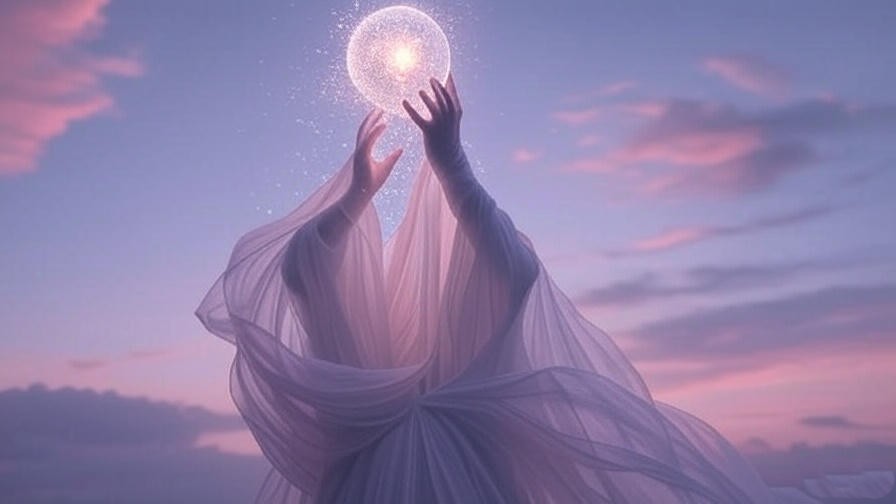
Seeing two eyes during meditation is more than a fleeting vision—it’s an invitation to explore your inner world, heal emotional wounds, and deepen your spiritual practice. Rooted in ancient wisdom and supported by modern science, this phenomenon offers a pathway to emotional clarity, self-awareness, and inner peace. Start tonight: set an intention to engage with your visions, journal your experiences, and practice heart-centered meditation to unlock their wisdom. Share your journey in the comments below or join our community at [your website’s community page] to connect with others. The eyes you see are not just visions—they’re gateways to a more fulfilled, balanced you.

